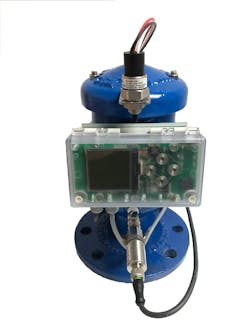DNS System Addresses 'Lost' Air Valves
In response to an issue that causes unnecessary costs because the location of air valves is not known, Designed Network Solutions (DNS) introduced a new Critical Air Valve Monitoring System.
According to DNS, the ‘disappearance’ of air valves means that many companies in the manufacturing/industrial sector are often unaware if these valves are operational or fit for purpose — creating potential burst and leakage events. DNS also states that non-functional air valves cause a constant build-up of air within pipelines, forcing pumps to work much harder than they should. This results in a reduced flow capacity and inefficient pump operation.
“For far too long, engineers have been unable to properly maintain air valves or address serious issues such as contamination, water quality, transient and water hammer simply because they don’t have access to the right information, said DNS Director Craig Stanners. "Now, with a proper Air Valve Monitoring System, they can carry out their work far more efficiently, reducing surge and transient events — first because they’ll know what’s actually in the network — and secondly, because they’ll be notified by an alarm to advise when an air valve is not working as it should be."
The new DNS Critical Air Valve Monitoring System can log at least two main parameters:
- Pressure within the main — and then alarms if the pressure drops to below 0.2 B because at this point the air valve is at risk of opening.
- Air valve environment and whether it is operating within atmospheric conditions, or if the air valve is submerged, posing a significant contamination risk.
